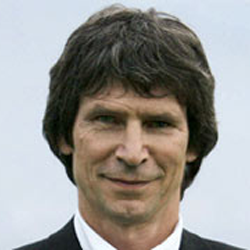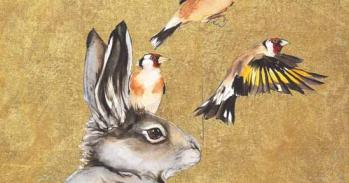
The book publishing industry has gone through more change during the past few decades than in any comparable period in its 500-year history. Professor John Thompson examines this change and asks what impact it will have on the future of books.
The book publishing industry has gone through more change during the past few decades than in any comparable period in its 500-year history. Professor John Thompson examines this change and asks what impact it will have on the future of books.
Despite widespread speculation about the ‘end of the book’, we are still a long way from a world in which trade books are routinely read on screens rather than on the printed page.
For centuries, books have played a central role in education, the spread of knowledge and the cultivation of literary and scholarly debate. With its origins dating back to the 15th century, the publishing of books is the oldest of the media industries and one which has continued to flourish despite the profusion of other media forms. However, over the last 30–40 years, the industry has gone through a process of turbulent change stemming from forces that are partly commercial, partly technological. Thanks to these developments, it bears little resemblance today to the industry that existed in the 1960s and before.
Despite these changes and despite the continuing importance of books in contemporary culture, there has been very little systematic research on the modern book publishing industry. Historians have studied the book trade and the impact of books in earlier centuries, but the modern publishing business has been largely neglected by researchers.
It was partly to fill this gap in our knowledge that I began in 1999 to study the changing structure of the industry in Britain and the United States. The research, spanning a decade, was funded by two grants from the Economic and Social Research Council (ESRC). While the first phase of the research focused on academic publishing, the second phase, begun in 2005, was concerned with mainstream trade publishing – the world of general interest books, aimed at the wider public and sold through high-street bookstores, supermarkets and the internet. This is the sector of publishing that produces bestsellers like Dan Brown’s The Da Vinci Code– books that are widely reviewed in the press, prominently displayed in bookstores and, in some cases, turned into films.
What makes a bestseller? Why do some books take off and become runaway successes while thousands of others vanish without a trace? What are the changes that have swept through the industry and how have they affected the nature of what gets published and what succeeds? What impact have these changes had on the character of our literary culture, and what impact are they likely to have in the years to come?
Three key developments
To address these and other questions I immersed myself in the world of trade publishing in Britain and the USA. I interviewed senior managers, editors and other staff at all of the large trade publishing groups in London and New York, as well as many staff working in small and medium-sized publishing houses; I also interviewed agents, authors, scouts and booksellers – altogether, I did more than 250 interviews with key players in the industry. This enabled me to build up a detailed picture of how the industry works, how it has changed over the past few decades and how it is changing today.
I was able to show that three key developments have shaped the evolution of trade publishing in the English-speaking world since the 1960s. The first was the growth of the retail chains, like Waterstones in the UK and Barnes & Noble in the USA. These nationwide chains of book superstores transformed the landscape of bookselling in the 1980s and 1990s; they made books much more widely available, but at the same time they drove many smaller independent booksellers out of business.
The second development was the rise of the literary agent. Although not new – the first agents appeared in London at the end of the 19th century – literary agents have, since the 1970s, become much more powerful brokers in the field of trade publishing. They control access to new content and, through auctions, are able to raise the stakes for books that are perceived to have high sales potential.
The final development was the consolidation of publishing houses under the umbrella of large multimedia corporations. Many of the great publishing houses whose names are well known to us all – Penguin, Jonathan Cape, Macmillan, Knopf – are today owned by large corporations and survive as imprints rather than as independent publishing houses.
Making bestsellers
Together, these developments have created a field of cultural activity that has a distinctive structure and dynamic – a ‘logic of the field’. They have led, for instance, to the polarisation of the industry, with four or five large corporate groups dominating the field and a plurality of small independent publishers on the margins. Very few medium-sized independent publishers remain active: in this new world of trade publishing, it is very difficult to be medium-sized.
These developments have also led to a preoccupation with what in the industry are commonly known as ‘big books’. These are not yet bestsellers but rather ‘hoped-for bestsellers’. Given the unavoidable role played by serendipity in trade publishing, it is simply unclear how well many new books will do in the marketplace – no-one really knows.
 So how do publishers decide how much they’re willing to pay for them? Various factors come into play here, but a crucial role is played by ‘the web of collective belief’ which is built up through the numerous conversations that take place between agents, editors and other players in the field. In the absence of anything solid, the expressed enthusiasm (or lack of it) of trusted others is decisive.
So how do publishers decide how much they’re willing to pay for them? Various factors come into play here, but a crucial role is played by ‘the web of collective belief’ which is built up through the numerous conversations that take place between agents, editors and other players in the field. In the absence of anything solid, the expressed enthusiasm (or lack of it) of trusted others is decisive.
The focus on big books is exacerbated by the financial pressures on the publishing houses owned by large corporations and by the practices of the retail chains, which order large quantities of some new books, charge publishers a premium for front-of-store displays and expect them to turn over quickly. Many new books fail to take off and are sent back to publishers in large numbers, resulting in historically high levels of returns. But in those cases where they do take off, publishers and booksellers mobilise quickly behind them, with additional resources and promotion, pouring more fuel on the flames – this in part is how bestsellers are made.
The end of the book?
Today trade publishers are faced with unprecedented challenges. The economic climate is tough, overall sales (especially in North America) are down and the arrival of a new generation of ebook readers has raised fresh questions about the future of printed books. Do these developments mean that the world of the book as we’ve known it is about to undergo a further transformation, even more radical than that which has characterised the industry in recent decades, perhaps even leading to the eclipse of the printed book as such?
Despite widespread speculation about the ‘end of the book’, we are still a long way from a world in which trade books are routinely read on screens rather than on the printed page. Although ebook sales have increased significantly in recent years, especially in the USA, they still account for only around 1% of the revenues of trade publishers – a tiny fraction. This is bound to increase as reading devices become more widely available but no-one knows exactly how significant it will eventually become.
Whatever happens, it seems likely that books will continue to play an important role in our cultural and public life for the foreseeable future. Books have been, and remain for many, a privileged form of communication, one in which the genius of the written word can be inscribed in an object that is at once a medium of expression, a means of communication and a form of art. For the telling of extended stories or the sustained interrogation of our ways of thinking and acting, the book has proven to be a most satisfying and resilient cultural form, and it is not likely to disappear soon. But how books will be produced and delivered, and where they will fit in the new symbolic and information environments that are emerging today, are questions to which there are, at present, no clear answers.
For more information, please contact the author Professor John Thompson (jbt1000@cam.ac.uk) at the Department of Sociology.
This work is licensed under a Creative Commons Licence. If you use this content on your site please link back to this page.





